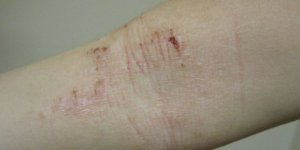| News / Science News |
Key Tech for Quantum Communications Offered by Implanting Diamonds with Flaws
Princeton University researchers are using diamonds to help create a communication network that relies on a property of subatomic particles known as their quantum state. Researchers believe such quantum information networks would be extremely secure and could also allow new quantum computers to work together to complete problems that are currently unsolvable.
The researchers were able to store and transmit bits of quantum information, known as qubits, using a diamond in which they had replaced two carbon atoms with one silicon atom.
In standard communications networks, devices called repeaters briefly store and re-transmit signals to allow them to travel greater distances. Nathalie de Leon, an assistant professor of electrical engineering at Princeton University and the lead researcher, said the diamonds could serve as quantum repeaters for networks based on qubits.
The key challenge in creating quantum repeaters has been finding a material that could both store and transmit qubits. So far, the best way to transmit qubits is to encode them in particles of light, called photons.
Optical fibers currently used across much of the network already transmit information via photons. However, qubits in an optical fiber can travel only short distances before their special quantum properties are lost and the information is scrambled. It is difficult to trap and store a photon, which by definition moves at the speed of light.
Researchers have looked to solids such as crystals to provide the storage. In a crystal, such as a diamond, qubits could theoretically be transferred from photons to electrons, which are easier to store.
The key place to carry out such a transfer would be flaws within the diamond, locations where elements other than carbon are trapped in the diamond's carbon lattice. Jewelers have known for centuries that impurities in diamonds produce different colors. To de Leon's team, these color centers, as the impurities are called, represent an opportunity to manipulate light and create a quantum repeater.
They decided to experiment with the electrical charge of the defect. Silicon vacancies in theory should be electrically neutral, but it turns out other nearby impurities can contribute electrical charges to the defect. The team thought there might be a connection between the charge state and the ability to keep electron spins in the proper orientation to store qubits.
The researchers started by laying down layers of carbon atoms to form the crystal. During the process, they added boron atoms, which have the effect of crowding out other impurities that could spoil the neutral charge.
Next, the researchers implanted silicon ions into the diamond, and then heated the diamonds to high temperatures to remove other impurities that could also donate charges. Through several iterations of materials engineering, plus analyses performed in collaboration with scientists at the Gemological Institute of America, the team produced neutral silicon vacancies in diamonds.
The next step in the research is to build an interface between the neutral silicon vacancy and the photonic circuits to bring the photons from the network into and out of the color center. (Tasnim News Agency)
YOU MAY ALSO LIKE





